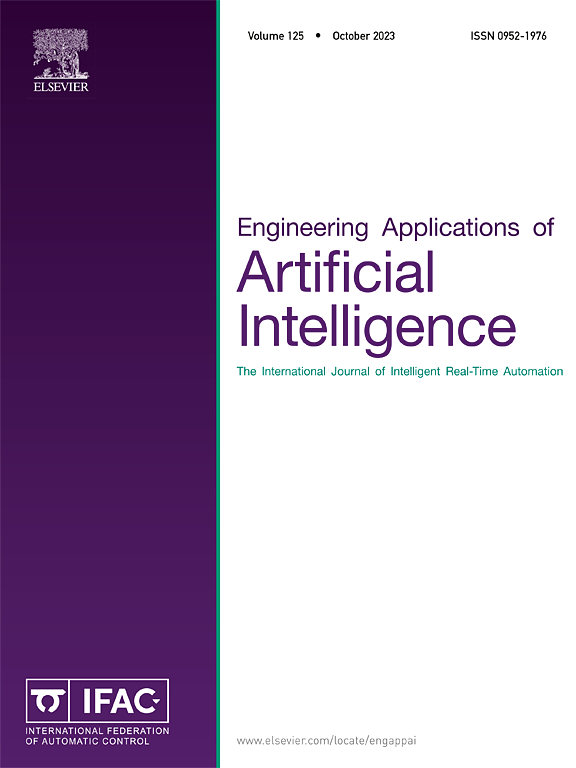一种可解释的人工智能-人类合作专利新颖性研究模型
IF 8
2区 计算机科学
Q1 AUTOMATION & CONTROL SYSTEMS
Engineering Applications of Artificial Intelligence
Pub Date : 2025-05-01
DOI:10.1016/j.engappai.2025.110984
引用次数: 0
摘要
随着包括专利数据库在内的技术相关大数据的积累,已有研究提出了利用自然语言处理模型进行专利分析的框架。人工智能(AI)应用需要基于对复杂环境和不确定性的理解以及模型预测性能的人类经验和洞察力。然而,现有的研究主要集中在应用大数据和开发自动化流程上。实际用户的理解和对模型可用性的考虑是不够的。研究必须考虑基于人机协作的方法来开发人工智能模型。本研究提出了一种协作方法,通过可解释的AI (XAI)模型(用于文本分类的自解释深度神经网络)与用户进行通信。提出的XAI模型为用户提供了模型预测的解释以及专利评估的预测结果。用户根据模型预测和解释提供反馈。源XAI模型通过反映用户反馈的再学习来改进。本研究利用人类协作方法对模型改进进行了实验评估。对于人的协作方法,本研究考虑了不依赖于XAI模型结果的人的干预过程,以及基于XAI模型给出的解释的人的参与方法。实验结果验证了XAI模型的性能,显示出最高的准确率(0.890)和F1分数(0.916),可以有效地应用于专利评估。本研究提出的人机协作模型也可以扩展并应用于技术智能任务。然而,本研究中的协作方法完全信任来自技术专家的人类建议;因此,后续的协作XAI模型可以通过与人力资源作为互补关系的双向沟通来改进。本文章由计算机程序翻译,如有差异,请以英文原文为准。
An explainable artificial intelligence – human collaborative model for investigating patent novelty
With the accumulation of technology-related big data, including the patent database, existing studies have proposed a framework for patent analysis using natural language processing models. Artificial intelligence (AI) applications require human experience and insight based on the understanding of complex environments and uncertainties and model predictive performance. However, existing research has focused on applying big data and developing automated processes. Actual user understanding and the consideration of model usability are insufficient. Studies must consider the human–machine cooperation-based approach in developing the AI model. This study proposes a collaborative approach through which the explainable AI (XAI) model, a self-explaining deep neural network for text classification, communicates with users. The proposed XAI model provides users with an explanation for the model prediction along with the prediction results for patent evaluation. Users provide feedback based on the model predictions and their explanations. The source XAI model is refined via relearning by reflecting on user feedback. This study experiments to assess model improvement using the human collaboration method. As for the human collaborative method, this study considers the process of human intervention independent of the XAI model's results as well as the method of human participation based on the explanation presented by the XAI model. The experimental results verified the XAI model performance, showing the highest accuracy (0.890) and F1 score (0.916), such that the model can be applied efficiently to patent evaluation. The XAI–human collaboration model presented in this study can also be expanded and applied to technology intelligence tasks. However, the collaborative approach in this study has complete trust in human advice from technical experts; thus, subsequent collaborative XAI models could be improved by communicating bidirectionally with human resources as a complementary relationship.
求助全文
通过发布文献求助,成功后即可免费获取论文全文。
去求助
来源期刊

Engineering Applications of Artificial Intelligence
工程技术-工程:电子与电气
CiteScore
9.60
自引率
10.00%
发文量
505
审稿时长
68 days
期刊介绍:
Artificial Intelligence (AI) is pivotal in driving the fourth industrial revolution, witnessing remarkable advancements across various machine learning methodologies. AI techniques have become indispensable tools for practicing engineers, enabling them to tackle previously insurmountable challenges. Engineering Applications of Artificial Intelligence serves as a global platform for the swift dissemination of research elucidating the practical application of AI methods across all engineering disciplines. Submitted papers are expected to present novel aspects of AI utilized in real-world engineering applications, validated using publicly available datasets to ensure the replicability of research outcomes. Join us in exploring the transformative potential of AI in engineering.
 求助内容:
求助内容: 应助结果提醒方式:
应助结果提醒方式:


